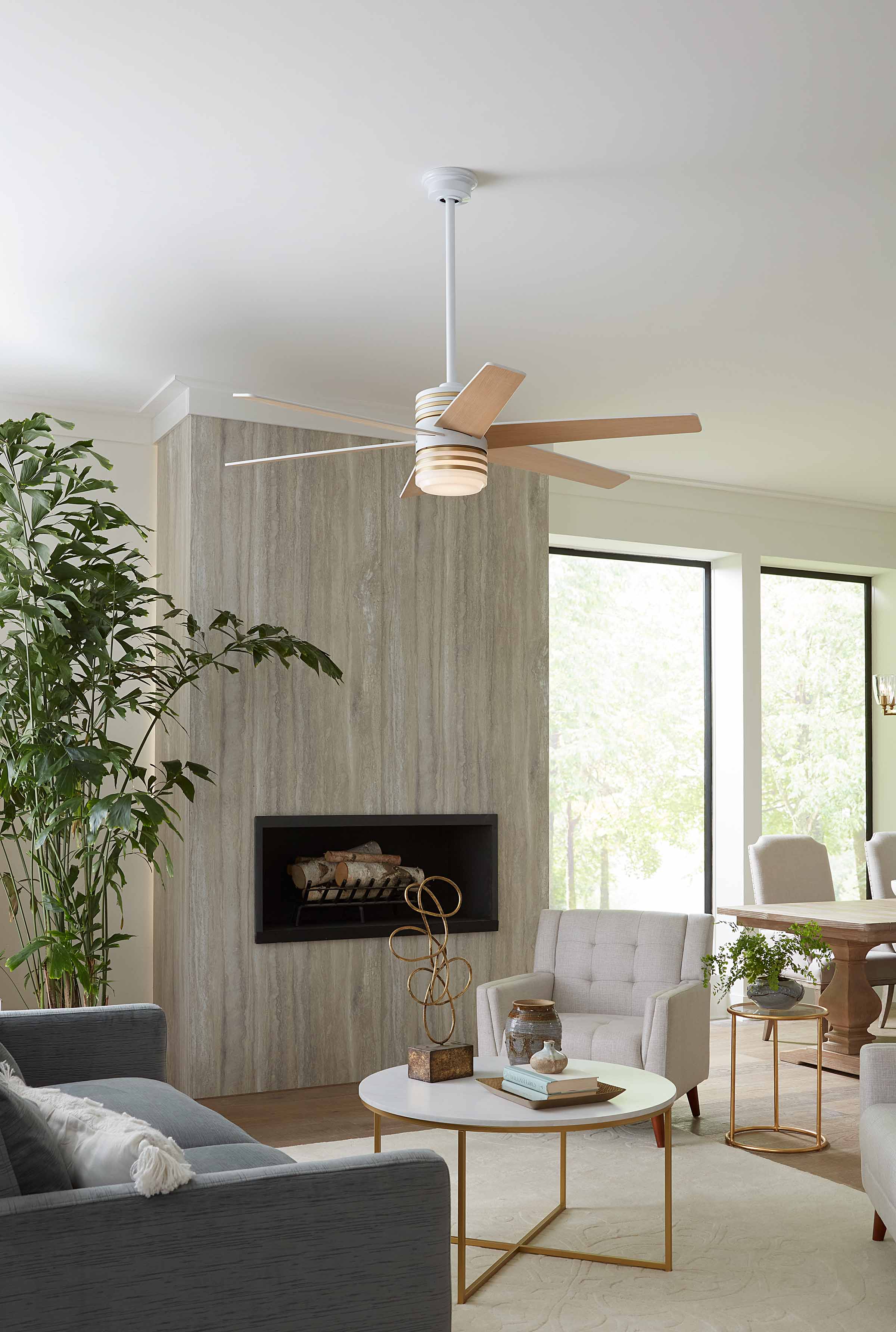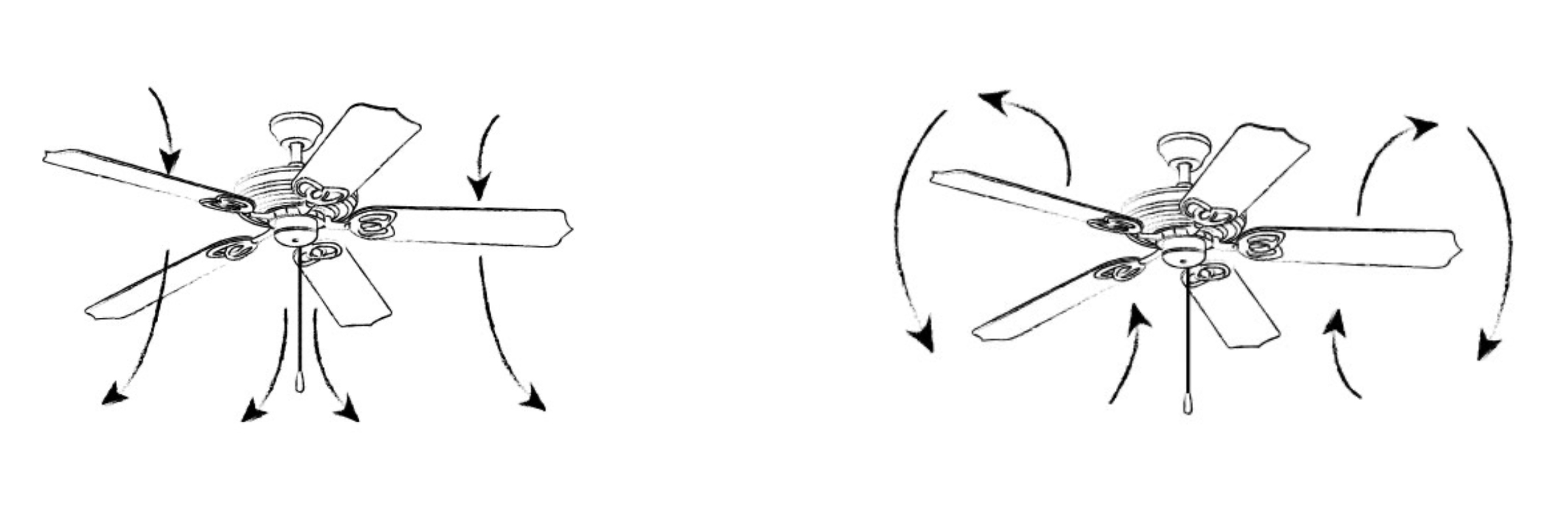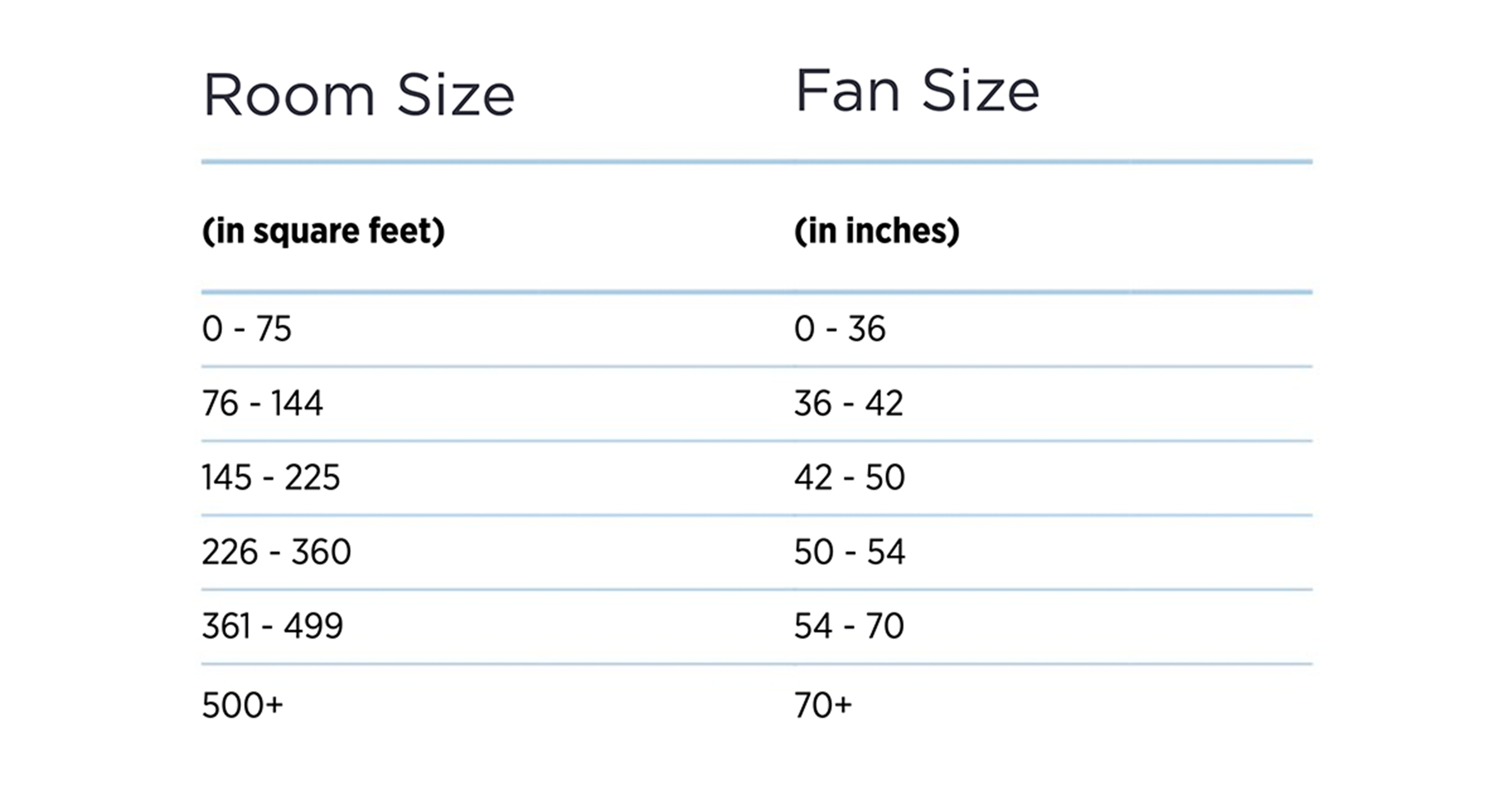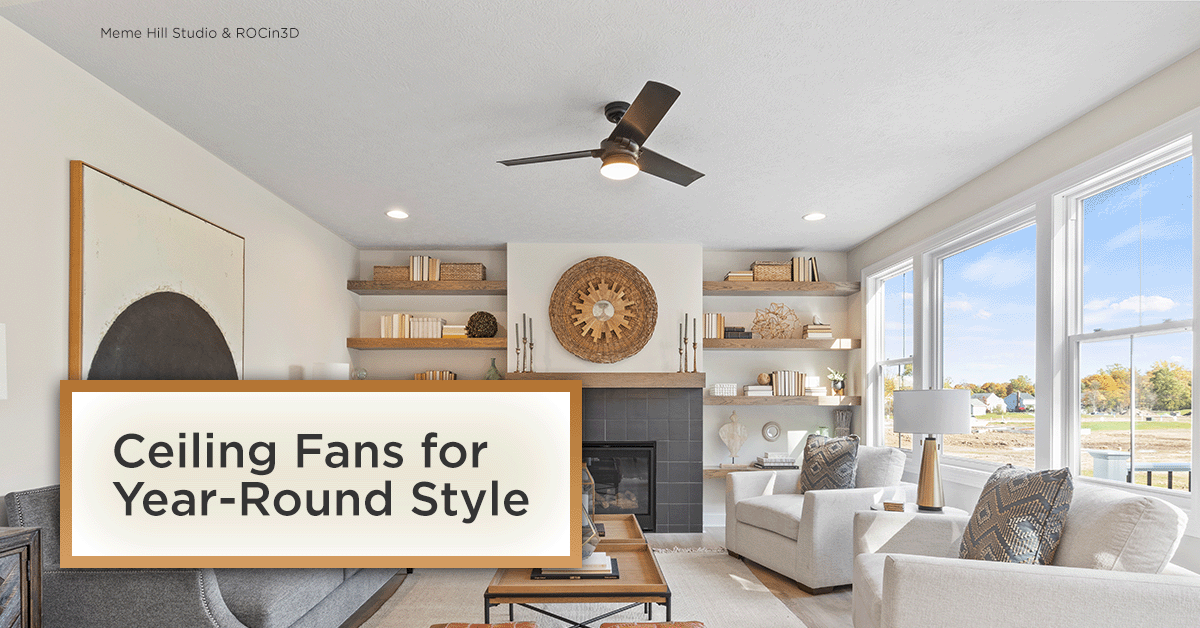Winter or summer, ceiling fans offer both style and function for your home. New materials and lighting options like LED allow fans to be created in designs from contemporary to classic to fit most interior design trends while providing beautiful, dimmable light.
Year-Round Ceiling Fan Use
 Featuring: Carrollwood
Featuring: Carrollwood
Even with the advent of cooler weather, you can continue using your ceiling fan.
Select a fan with reversible blades to circulate cool air in summer or warm air in winter. Running fans in the colder months can save up to 10% on heating costs and is as simple as flipping a switch. Most ceiling fans have a small switch on either the motor housing or the switch cup.
In the summer months, slightly angled ceiling fan blades turn counterclockwise to move air down, making people feel cooler due to a concept known as the wind chill effect. During winter, the warm air generated by your heating system naturally rises to the ceiling while cooler air sinks. By switching the direction your fan blades turn, that cooler air is drawn upwards, which forces the warmer air near the ceiling back down into the space.

New Designs
Ceiling fans currently are following design trends with new motor housing/blade materials and finishes, with a trend-forward aim that can make them a focal point of the room. One of our newest ceiling fans, Byars, features a both soft uplight and even downlight illumination for an extra glow for those darker Winter months. In addition, many new fans incorporate an integrated LED source and quiet DC motors, both options that increase the fan's energy efficiency.

Featuring: Byars
Remote Control Ceiling Fans
Remotes can control fan speed; some also offer dimming capabilities for added convenience in creating a comfortable and welcoming living area. Most remotes for ceiling fans install easily in the canopy of the fan. Check the ceiling fan's specifications to ensure the remote is compatible with your fan's model.
Size the Ceiling Fan to Your Space
Size is important when selecting your ceiling fan. If a fan is too large, it can overwhelm the space. On the flip side, if the fan is too small, the airflow may be inadequate for that area.
Lighting experts suggest the following fan sizes compared to square footage.

Allow at least 7 feet (84 in.) from the floor to the bottom of the fan, with 8 or 9 feet being the ideal above-floor placement. Most ceiling fans come equipped with a down rod to help you adjust to the correct height.
For lower ceilings, consider a hugger fan. These are flush-mounted: they do not have a conventional down-rod. Hugger ceiling fans are suitable for rooms 8 feet high or less. They also work on sloped ceilings.
Find the perfect ceiling fan to meet your needs here.

